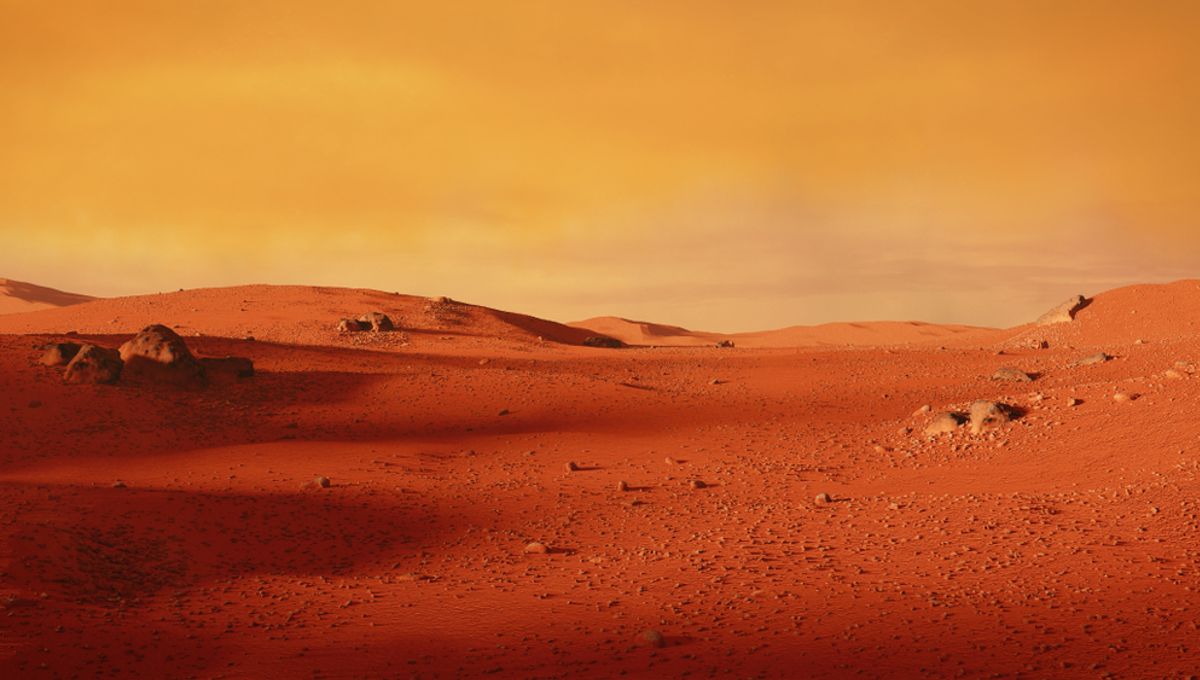
Elton John was right: Mars ain’t the kind of place to raise your kids. And not just because it’s cold as hell. The combination of a thin atmosphere and lack of magnetic field means that the planet experiences higher levels of radiation – both energetic particles and energetic light – compared to Earth. But just how the Martian atmosphere behaves and responds is not fully understood, and that’s something we need to know if we ever plan on stepping foot on the surface of Mars. That’s why a team is proposing the M-MATISSE mission to find out.
The mission consists of twin spacecraft designed to study the Martian atmosphere from two locations at the same time. M-MATISSE will track the solar wind – the stream of electrically charged particles from the Sun – and its interaction with Mars. Just recently, the first detection of visible aurorae on Mars was reported. This mission would go even further, working out just how solar radiation affects it, in its totality.
“The mission’s aim is to understand the Martian atmosphere in its entirety. This means from the surface up to space,” mission leader Dr Beatriz Sánchez-Cano, of the University of Leicester, told IFLScience.
This could also shed light on the planet’s habitability. Understanding the Red Planet’s space weather is a key step. This could go towards potentially being able to forecast hazardous situations for both humans and robots exploring the surface of Mars.
“This is important because understanding the behaviour of the Martian system and the chain of processes that control space weather and space climate at Mars is essential for exploration,” Dr Sánchez-Cano said in a statement sent to IFLScience.
“It leads to accurate space weather forecasts (i.e. accurate understanding of solar energy and particles at Mars) and, thus, prevents hazardous situations for spacecraft and humans on the Red Planet, as we well know from Earth space weather monitoring experience.”
This mission would provide insight into the day-to-day changes to Mars, but it would be particularly important when major space weather events occur. Last year, a very strong solar flare affected the camera on NASA’s Curiosity, as well as causing havoc for orbiters around Mars. M-MATISSE would help work out the dynamics of these phenomena. Missions on Mars have experienced communication blackouts in the past, and it was concerning enough with just robots. With living astronauts, it is a major risk.
“Imagine if there are also humans and that means the humans can’t communicate at all with Earth,” Dr Sánchez-Cano told IFLScience. “It’s very, very important to understand how the system will behave. And it’s always different because there are many conditions, many variables. So that’s why we have to have a full characterization. And this is the goal of the mission!
The M-MATISSE project, which stands for Mars Magnetosphere ATmosphere Ionosphere and Space-weather SciencE, began in 2021, when the European Space Agency put a call out for medium-class missions. The extremely successful Solar Orbiter and Euclid are examples of this mission class. M-MATISSE is now one of the final three candidates.
A detailed overview of this mission was presented at the Royal Astronomical Society National Astronomy Meeting 2025 in Durham, held July 7-11.
Source Link: Dangerous Radiation Awaits Astronauts On Mars – New Mission Could Work Out Just How Much